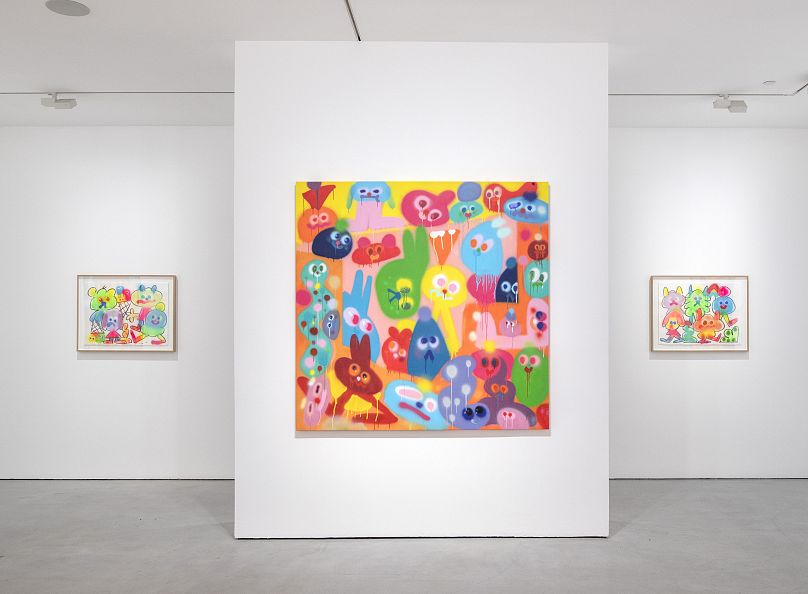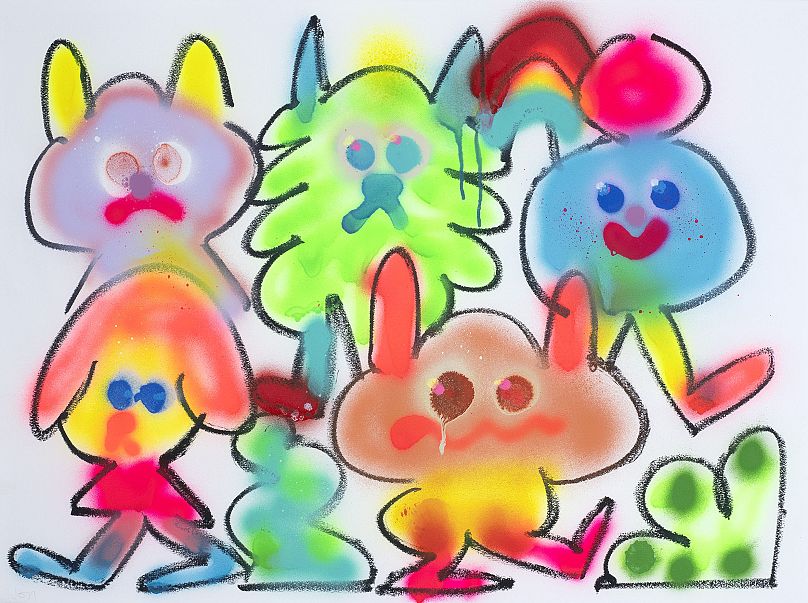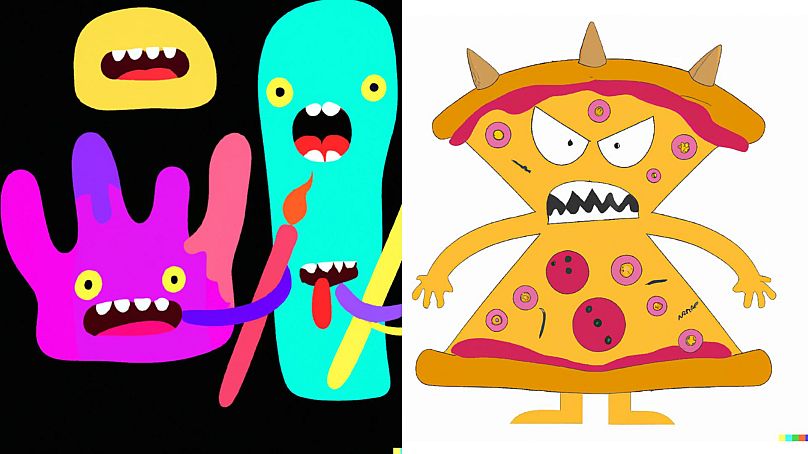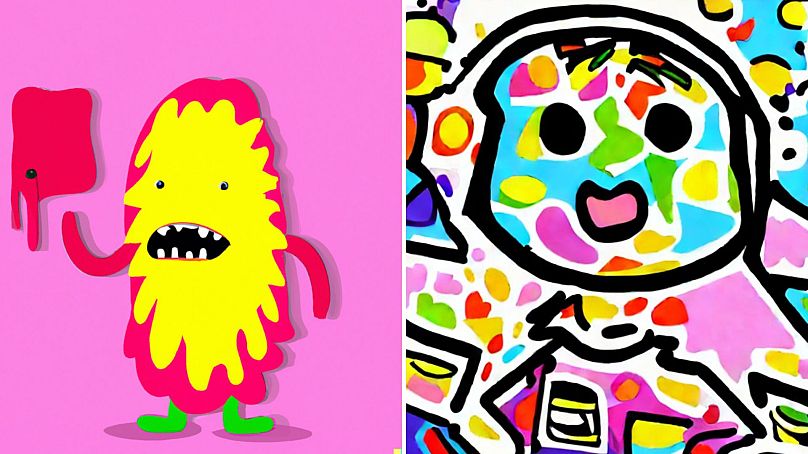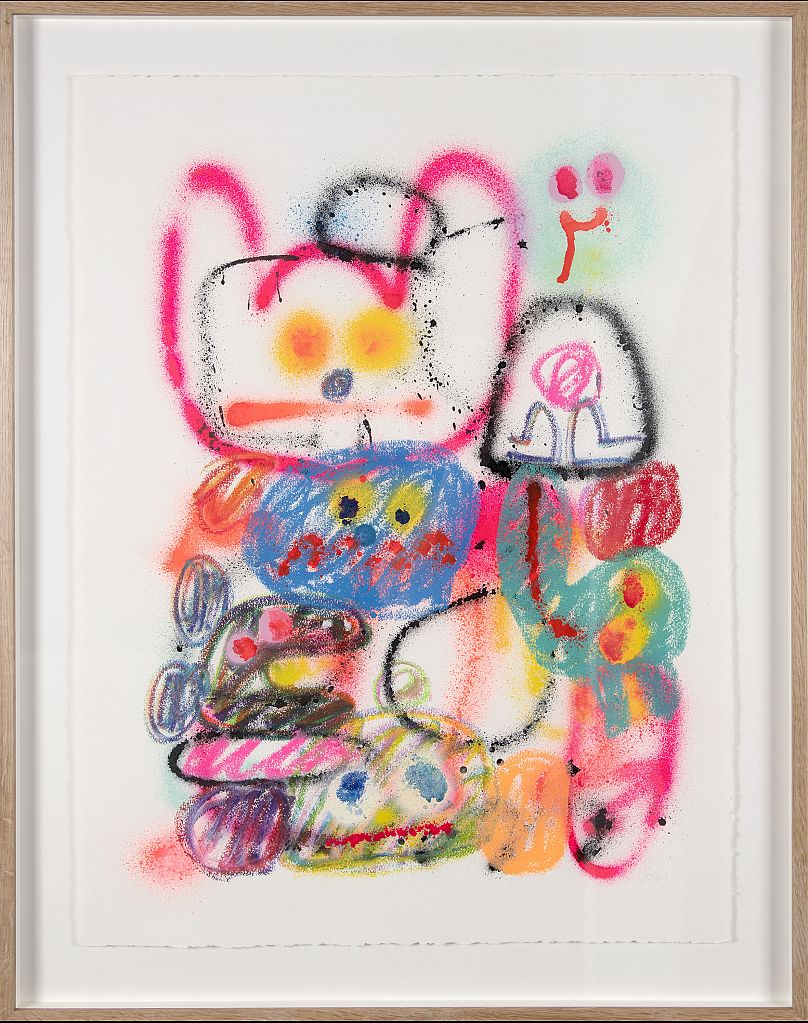We sat down with the celebrated UK-born artist Jon Burgerman, who has recently launched his newest exhibition, 'Sim City', at the OMNI gallery in London.
Jon Burgerman, the acclaimed UK-born and New York-based artist and illustrator, has recently launched his newest exhibition, 'Sim City', at the OMNI gallery space in London.
The pop-up exhibition features eight large-scale aerosol paintings and 19 paper works, that showcase his unmistakably unique and vibrant style, replete with whimsical characters, each with their own narratives and quirks.
Despite the buoyant, optimistic compositions that he presents, there is an underlying message that speaks to the human condition: that even in the midst of a crowded city, surrounded by multitudes, many individuals feel disconnected and isolated, craving recognition and companionship.
"Each painting is an exploration of 20th and 21st century city life. Super chaotic, super busy, super colourful. Everyone vying for attention and space. Some of that being fun and a bit of a circus, but also some of that being a little anxiety inducing," Burgerman told Euronews Culture.
'Sim City' also includes a unique collaboration with his electronic music-producing brother, Alex Burgerman, who goes by the producer name 'Todayidance'. Together, they have created a mesmerising video installation, where Burgerman's iconic characters come to life to the beat of his brother's music.
As if the vivid visuals weren't enough to satisfy your senses, Burgerman kindly handed out biscuits to visitors at the opening of the exhibition.
We had the opportunity to sit down with Burgerman and discuss his artistic journey, inspirations, and thoughts on the increasing role of artificial intelligence in the art world.
Professional doodler
Chances are you've already come across the work of Jon Burgerman.
He's collaborated with some of the biggest brands in the world, including Nike, Samsung, Pepsi, and has given numerous talks and workshops at renowned institutions, such as London's V&A Museum and the Cooper-Hewitt National Design Museum in New York.
Additionally, he's published several children's books, including "Rhyme Crime" and "How to Eat Pizza", and has a massive social media following, boasting over 140,000 followers on Instagram alone.
But how did this British-born artist become a well-known "doodle artist"?
Although Burgerman graduated in fine art from Nottingham Trent University in 2001, his love for creation started much earlier.
"Well, like most children, you're given crayons and paints. And that for me was super exciting. I always liked doing that and I just continued painting and drawing, and experimenting in art through school," says Burgerman.
His love for art grew from his childhood fascination with animation, especially the works of Tex Avery and Chuck Jones. His all-time favourites include 'What's Opera, Doc?' from 1957 and the 1955 Looney Tunes classic 'One Froggy Evening', which he believes offer perfect examples of artistry, storytelling, and characterisation in animation.
Burgerman's own style is instantly recognisable. His work usually features colourful, cartoonish figures appearing in surreal and unexpected ways. It's generally a frenzy of chaos and frantic energy, with characters colliding and overlapping in a dizzying array of shapes and colours.
"I've always loved the act of creation. Start with a blank rectangle of some form, and then you can do anything to it. It can become anything. A little sketch can lead anywhere."
"Actually being in a white-walled gallery like this makes me just want to draw on the walls. I just have that in me," Burgerman added.
Burgerman on AI
As technology continues to advance, the line between what's real and what's artificially created is becoming increasingly blurred.
One area where this is particularly evident is in the world of art, with new AI software like DALL·E and Stable Diffusion that can create images in the style of other artists in a matter of seconds. This has sparked controversy and left many artists concerned about their livelihoods.
To see just how convincing these AI-generated artworks are, we decided to do an experiment with Burgerman during our interview. We used DALL·E to create four "Jon Burgerman" style images and asked for his feedback and a rating out of 10. What followed was pure comedy gold.
Here are the images that we were able to create in a matter of seconds:
Let's just say that he was not impressed with any of these images. He gave them all a big at zero out of ten rating.
"I don't think it looks anything like my work, but I kind of see that it's a weird kind of monster. These are just very generic-looking, you know?" he says with a chuckle.
"If there were a candy store opening across the street, I would imagine that this would be the perfect kind of outlet for it," he adds.
Burgerman believes what sets human-made art apart from AI-generated art is the subtleties and nuances that only a human can bring to their work.
"None of these have any kind of heart or soul," the artist observes. "This took, like what, five seconds to come up with? It's pretty impressive. But to me, it looks like it took five seconds to come up with."
Despite the potential threat that AI-generated art poses to human artists, Burgerman remains optimistic about the future of his craft. "These things will only get more and more sophisticated," he says. "I wonder if they will make human-made work that much more valuable."
While Burgerman didn't feel threatened by the AI-generated images, he did raise concerns about the impact they could have on artists and designers who may be commissioned to create similar works.
"I worry for particularly like illustrators and designers that might get commissioned to do this kind of stuff. And companies will just do prompts and be satisfied with that," he says.
He also emphasised the importance of having discussions about how AI is used and who is allowed to contribute to the database it draws from.
"We should protect and look after human artists and their works, and not let ourselves get carried away with AI," he says. "It all depends on how we use them, like any technology. It depends on how we employ them."
**'Sim City' runs until 27 April at OMNI in London.**Check out the video above to see the highlights of our interview with Jon Burgerman.












